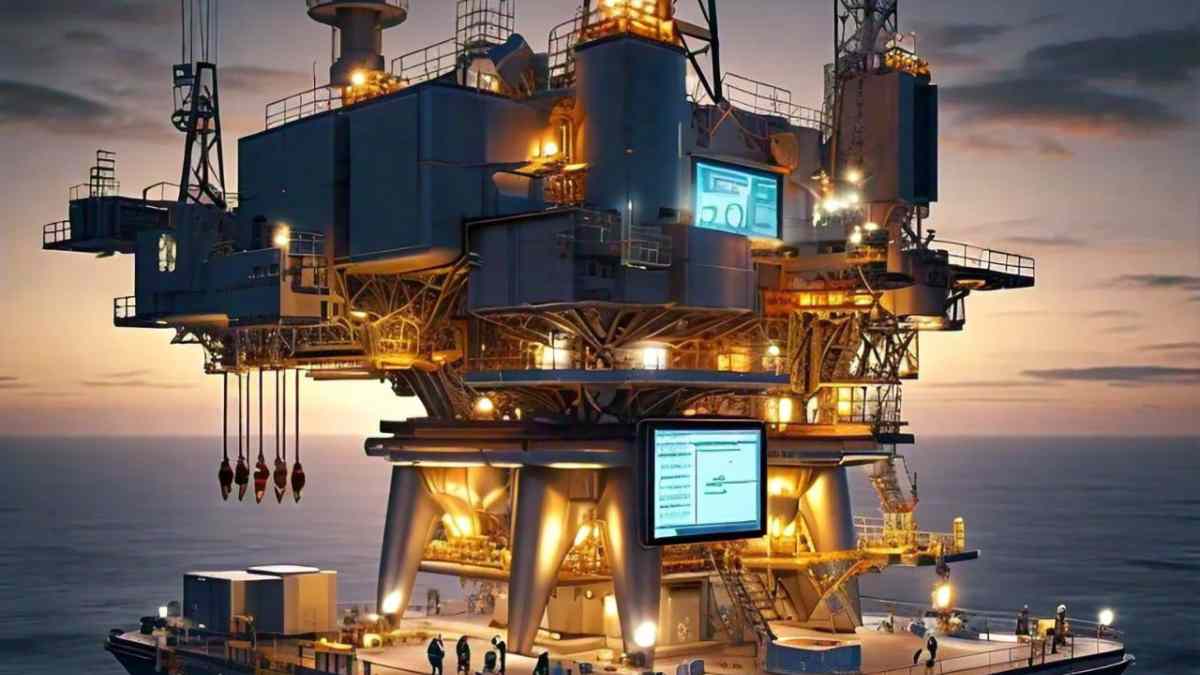Deep offshore technology has completely changed the way we investigate and make use of submerged resources. Deep offshore technology has improved dramatically, from crude drilling techniques in the early days to highly advanced digital equipment in the present.
This article delves into the field’s complex history, present, and future, highlighting its significance in today’s world. To fully appreciate the impact of deep offshore technology on the industry, one must have a thorough understanding of the technology’s role and related breakthroughs, such as intelligent technologies and technology solutions pros.
Table of contents
Initial Offshore Drilling Days
Deep Offshore technology drilling was a tough effort in the early 1900s. The first techniques involved extending land rigs onto piers in shallow waterways, but these approaches were constrained by harsh. These early efforts laid the groundwork for what would eventually become deep offshore technology.
The difficulties encountered by early pioneers highlighted the significance of implementing a technology system in the present day to streamline and improve operations. Despite these hurdles, the foundation for deep offshore technology was laid, paving the way for additional improvements.
Beginnings of Modern Offshore Drilling in the 1960s and 1970s
In the 1960s and 1970s, deep offshore technolog𝒚 underwent a significant transition. Innovations such as submersible drilling equipment and floating drilling rigs enabled deeper-water activities.. The need to access previously unreachable oil deposits and the growing demand for oil drove these breakthroughs. During this time, deep offshore technolog𝒚 was introduced, This era also saw the rise of technology incubation centers that fostered further technological advancements and intelligent technologies.
Progress during the 1980s
Deep offshore technolog𝒚 advanced substantially in the 1980s, with the introduction of more complex drilling techniques. While dynamic positioning technologies improved drilling platform stability, enhanced directional drilling enabled more precise targeting of oil deposits. Getting a deep offshore technolog𝒚 system in modern day operations started becoming more critical during this era.
Intelliscient technologies began to emerge, providing more accurate data and improving operational efficiency. Technology incubation centers continued to support these advancements, fostering innovation and collaboration among deep offshore technolog𝒚 solutions professionals.
The 1990s’ Technological Leap
Deep offshore technolog𝒚 entered a new age in the 1990s when subsea systems were developed, ushering in a technical revolution. Deepwater fields might now be exploited for gas and oil without the requirement for fixed platforms thanks to these methods.
New safety features, such blowout preventers, were also included, reducing the dangers of deep water drilling. These breakthroughs were fostered in large part by technology incubation centers, which offered the tools and encouragement needed for continued advancement.
Digital Transformation in the 2000s
With the advent of the digital age, the 2000s witnessed the integration of digital technologies into deep offshore technology operations, revolutionizing deep offshore technolog𝒚. Real-time data monitoring and advanced simulation tools transformed how companies managed offshore projects. This digital transformation enhanced decision-making processes and operational efficiency.
Deep offshore Technology incubation centers supported these advancements, fostering innovation and collaboration among industry professionals.
Modern Deep Offshore Technology
Deepwater technology is leading the way in innovation today. Modern technology, including remotely operated vehicles (ROVs) and autonomous underwater vehicles (AUVs), is critical for exploration and maintenance operations. These technologies enable precise inspections and operations at previously unachievable depths.
Deep offshore technolog𝒚 solutions professionals are essential in managing these sophisticated systems, ensuring their optimal performance. Technology incubation centers remain vital in fostering ongoing innovation and development in this field.
Environmental Considerations
Despite its advancements, deep offshore technolog𝒚 drilling poses environmental challenges. The impact on marine habitats is a major worry, driving the industry to adopt more environmentally friendly procedures. Innovations in spill response and containment are crucial for reducing the environmental impact of deep offshore operations.
Deep offshore technology solutions professionals take the lead in implementing sustainable practices and ensuring environmental regulatory compliance, driving the industry’s environmental stewardship. The advantage deep offshore technolog𝒚 gives to environmental preservation is apparent, as it enables more efficient and effective solutions.
Economic Impacts of deep offshore technology
Although deep offshore technolog𝒚 drilling is an expensive venture, there are significant financial advantages. The extraction of deep water reserves contributes significantly to global energy supplies, driving economic growth. However, the high costs and risks associated with deep water projects present ongoing challenges. Getting a deep offshore technology system in modern day operations is crucial for managing these economic challenges and maximizing the benefits of deep offshore technolog𝒚.
Safety Enhancements
Safety remains a paramount concern in deep offshore technolog𝒚. Recent innovations include advanced safety protocols and improved response strategies for deep water incidents. These measures are essential in protecting both human lives and the environment.
Getting a deep offshore technolog𝒚 system in modern day operations is crucial to ensure these safety enhancements are effective and reliable. Deep offshore Technolog𝒚 incubation centers continue to support the development of new safety technologies, fostering innovation and collaboration among industry professionals.
Difficulties and Possibilities
Financial and environmental challenges continue to hinder deep offshore technology’s progress, despite its advancements. Sustained investment in research and development is crucial for the deep offshore industry to overcome the existing hurdles and realize the full potential of these valuable resources.
Technology incubation centers, which offer the tools and assistance required for continued development, will be essential in promoting creativity and teamwork. It is impossible to overestimate the benefit that deep offshore technolog𝒚 offers in resolving these issues because it makes possible more effective and efficient solutions.
Case Studies of Major Offshore Projects
Analyzing major offshore projects provides valuable information about how deep offshore technolog𝒚 is evolving. Initiatives such as Brazil’s Pre-Salt fields and the Gulf of Mexico’s Thunder Horse showcase groundbreaking accomplishments and offer ideas into how to tackle deep water challenges.
Examining noteworthy offshore projects provides useful information about the evolution of deep offshore technolog𝒚. Projects such as the Gulf of Mexico’s Thunder Horse and Brazil’s Pre-Salt fields demonstrate groundbreaking advances and lessons learnt in tackling deep water obstacles. Projects also demonstrate how deep offshore technology improves efficiency and safety. Technology incubation centers supported these projects, fostering innovation and collaboration among industry professionals.
Future Trends in Deep Offshore Technology
Researchers and developers will continue to advance deep offshore technology in the future. Machine learning and artificial intelligence (AI) will revolutionize the deep offshore technology sector, transforming its future. It’s possible that technological incubation centers will be critical to the development of these innovations.
Professionals with experience indeed deep offshore technolog𝒚 solutions will be crucial in integrating these new technologies and guaranteeing their successful deployment. Incorporating a technology system into contemporary operations is important to uphold the elevated benchmarks necessary for deep offshore technolog𝒚 in the future.
Deep Offshore Technology in Renewable Energy
Offshore wind farms and other renewable energy projects are progressively utilizing the concepts of deep offshore technolog𝒚. These projects highlight the versatility and future promise of deep offshore technology by utilizing the same technological improvements employed in oil and gas production.
The overlap in technology solutions showcases the advantage technology can bring to renewable energy efforts as well. Technology incubation centers support these projects, fostering innovation and collaboration among industry professionals.
Conclusion
The development of deep offshore technolog𝒚 demonstrates human resourcefulness and tenacity. From humble origins to the cutting-edge advances of today, this field has continuously pushed the boundaries of what is possible. Professionals offering technical solutions and intelligent technologies will be essential in advancing these developments. Centers for technology incubation will continue to be essential for promoting continuous innovation and advancement. Technology’s unquestionable benefits for deep offshore technolog𝒚 operations guarantee the sector’s long-term viability and prosperity.
FAQs
What is deep offshore technology?
Deep offshore technolog𝒚 encompasses the methods and technologies used to explore and harvest resources from deep underwater locations. This comprises modern drilling rigs, subsea systems, and autonomous vehicles capable of operating at tremendous depths. Intelligent technologies and technology solutions professionals play a crucial role in the successful implementation of these methods.
How has deep offshore technology evolved over the years?
Deep offshore technolog𝒚 has advanced from basic shallow-water drilling techniques to complex devices capable of functioning in extreme deep water conditions. Key milestones include the development of floating drilling rigs, subsea systems, and the integration of digital technologies. Getting a technology system in modern day operations has become increasingly important in managing these advancements.
What are the major benefits of modern deep offshore technology?
Access to previously unreachable oil and gas sources, higher safety precautions, and increased operational efficiency thanks to real-time data monitoring and sophisticated drilling procedures are just a few advantages of modern deep offshore technolog𝒚. Intelligent technologies demonstrate the benefit of technology in the field by producing accurate data and increasing operational efficiency.
What effects does deep offshore drilling have on the environment?
Deep offshore drilling poses a significant threat to marine ecosystems, putting them at risk of oil spills and habitat destruction. To tackle these issues, technology incubation centers are putting more and more of an emphasis on creating environmentally responsible solutions. Professionals that specialize in deep offshore technolog𝒚 solutions are essential to putting these sustainable strategies into action.
What does the future hold for deep offshore technology?
With predicted breakthroughs in artificial intelligence (AI), machine learning, and automated systems, the future of deep offshore technology appears bright. Deep water operations will benefit from these technologies’ increased sustainability, safety, and efficiency.
Intelligent technologies and technology incubation centers will be essential to the development of these developments. Getting a technology system in modern day operations will be crucial for maintaining the high standards required in the future of deep offshore technology.


